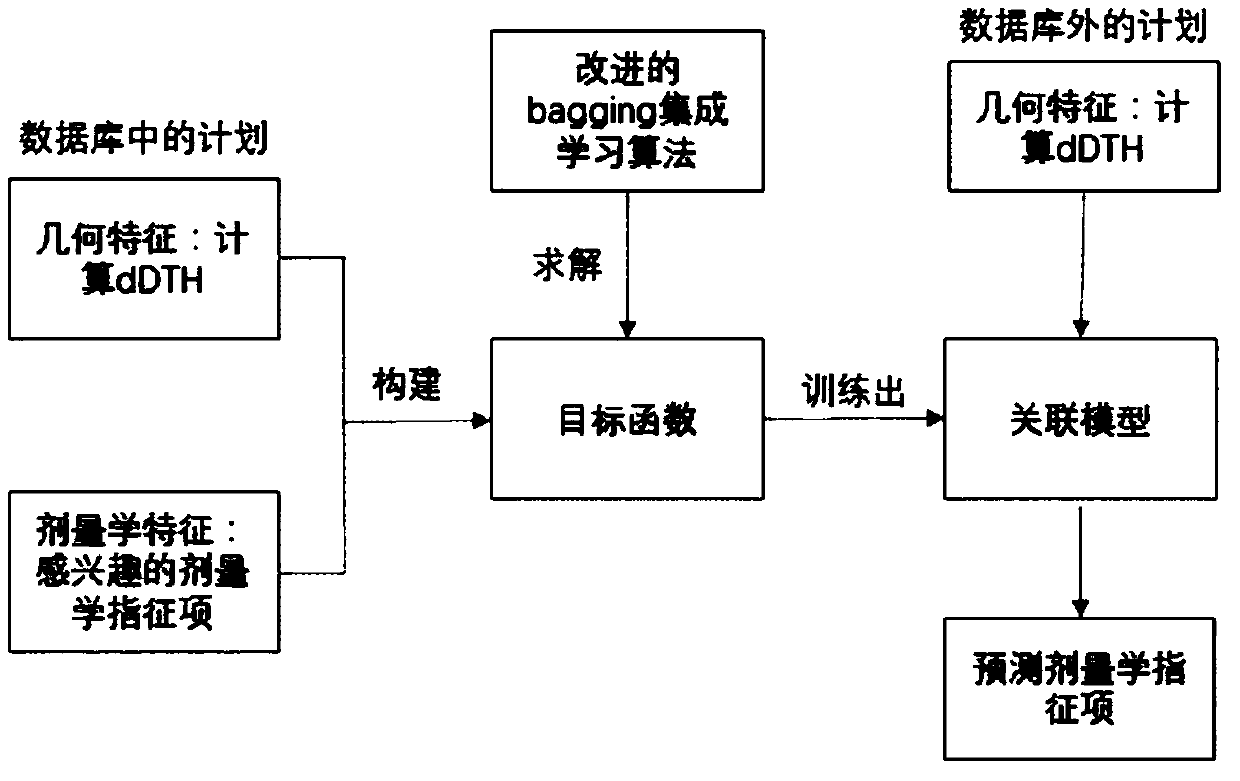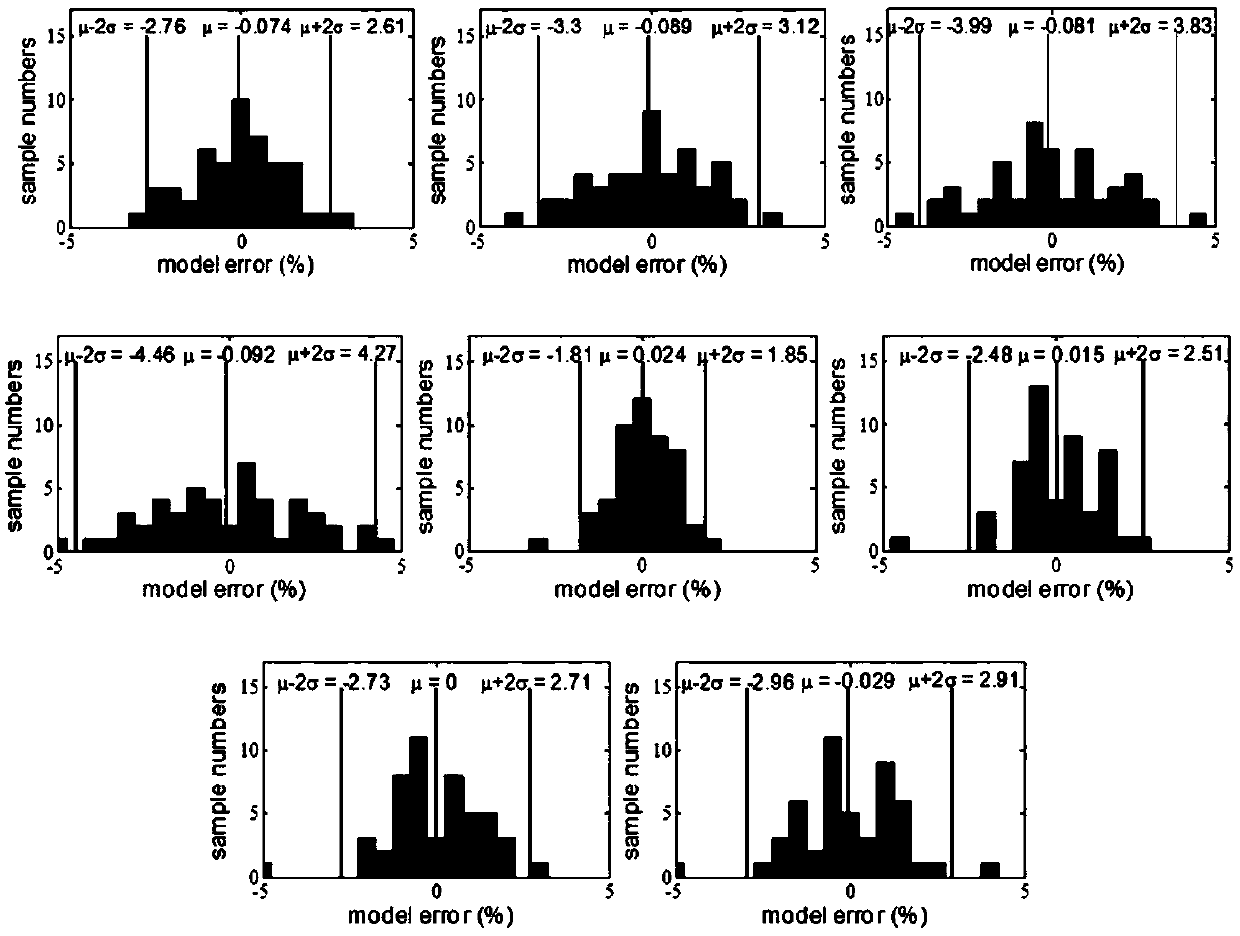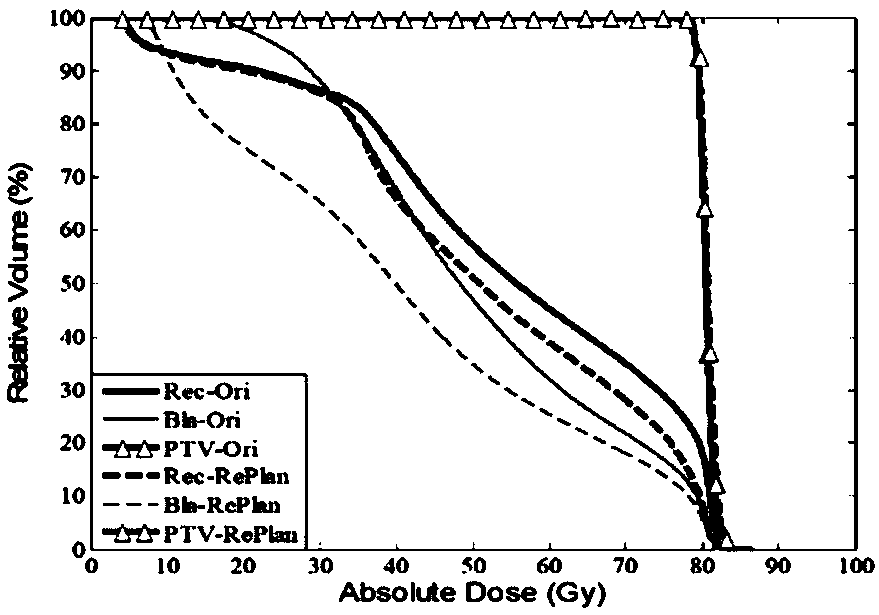Intensity adjustment radiotherapy planning dosiology indication item prediction method based on intelligent learning
An intensity-modulated radiotherapy and prediction method technology, applied in the field of medical radiotherapy, can solve problems such as difficulty in quantitatively evaluating the quality of radiotherapy plans, achieve fast and efficient dose optimization parameter setting and adjustment, reduce uncertainty, and effectively and accurately evaluate and control. Effect
- Summary
- Abstract
- Description
- Claims
- Application Information
AI Technical Summary
Problems solved by technology
Method used
Image
Examples
Embodiment 1
[0055] In this example, the dosimetry index items were predicted for the bladder of prostate cancer patients, and the VMAT plans of 50 prostate cancer patients were collected from the Southwestern Medical Center of the University of Texas in the United States for the training of the linear correlation model.
[0056] First, the geometric features of the patient are extracted. In this embodiment, the combination of dDTHs of the rectum and bladder is used as the geometric features of the patient. Formula 1 is used to calculate the differential distribution of the distance between the organ at risk (rectum and bladder) and the target area (dDTH). The distance unit dr after dDTH discretization is set to 5mm, and the boundary distance r of rectum and bladder dDTH is limited to the range [-25,55]mm and [-30,80]mm respectively.
[0057] Then, according to the clinical guidelines for designing VMAT plans for patients with prostate tumors in the US Southwestern Medical Center, 8 interes...
PUM
 Login to View More
Login to View More Abstract
Description
Claims
Application Information
 Login to View More
Login to View More - R&D
- Intellectual Property
- Life Sciences
- Materials
- Tech Scout
- Unparalleled Data Quality
- Higher Quality Content
- 60% Fewer Hallucinations
Browse by: Latest US Patents, China's latest patents, Technical Efficacy Thesaurus, Application Domain, Technology Topic, Popular Technical Reports.
© 2025 PatSnap. All rights reserved.Legal|Privacy policy|Modern Slavery Act Transparency Statement|Sitemap|About US| Contact US: help@patsnap.com



